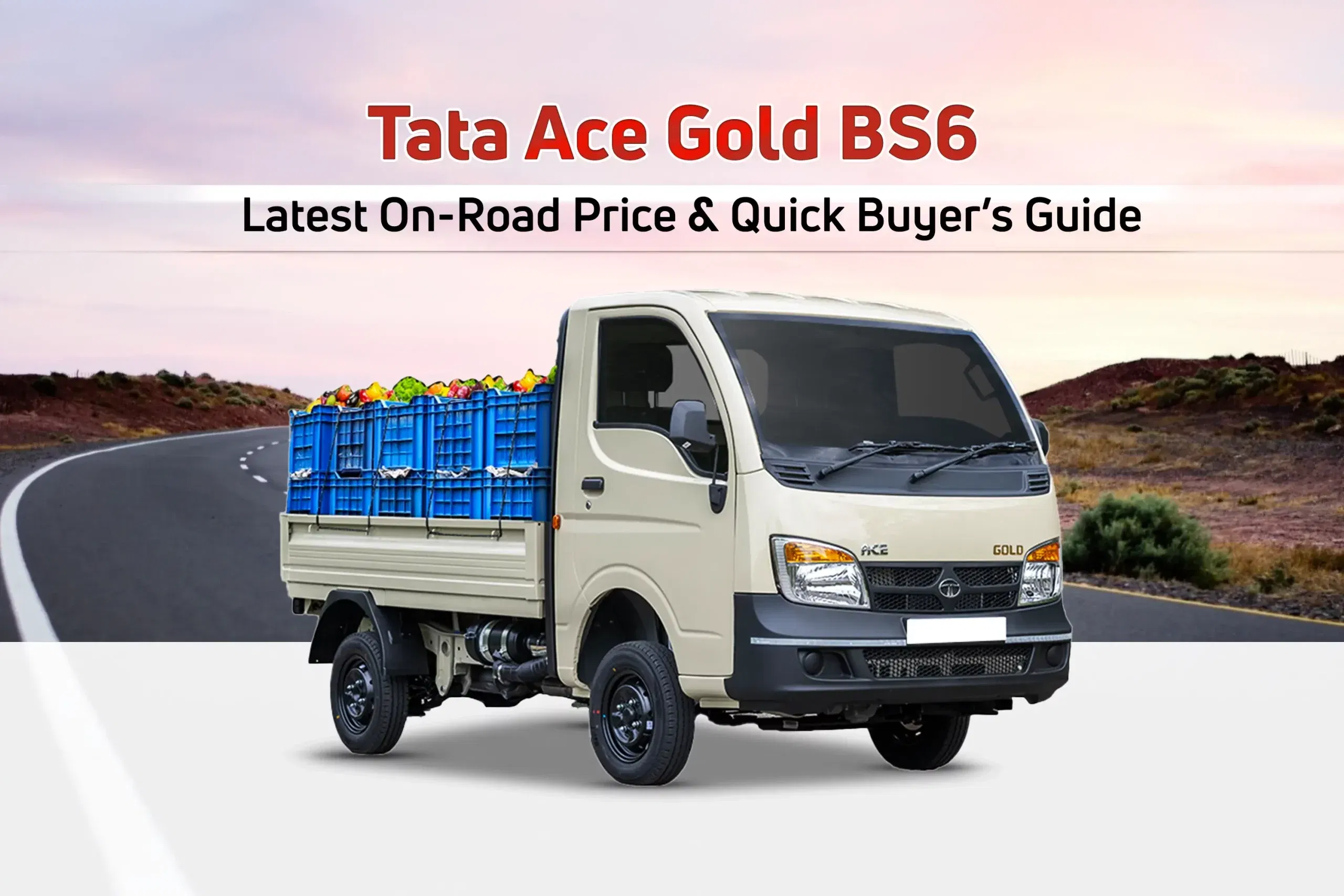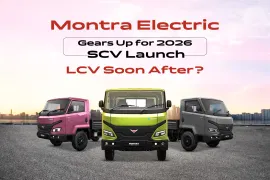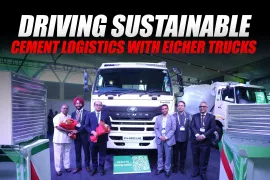The Tata Ace Gold BS6 often referred to as the Tata chota hathi truck occupies a long-standing position within India’s light-commercial vehicle mobility ecosystem. While compact in form and relatively simple in construction, the model represents a layered engineering approach tailored for short-range logistics, dense traffic corridors and mixed-terrain rural operations. Each variant in the BS6 series introduces its own balance of engine dynamics, payload behaviour and operating economics. What follows is a structured, formal analysis of the vehicle, designed with higher linguistic complexity and sentence variation.
Structural Foundation and Core Mechanical Layout
Fundamentally, the Ace Gold BS6 is built on a ladder-frame chassis, which is adept at coping with repetitive torsional stress generated by irregular loads and different road surfaces. The frame is coupled with parabolic leaf-spring suspension for the front end and semi-elliptical leaf-spring suspension for the rear, enabling the vehicle to cope with repetitive load cycles.
The basic mechanical suite consists of a 4-speed manual gearbox, a mechanical steering system and drum brakes at both axles. None of these elements are meant to wow; instead, they aim for predictable behaviour, easy repairability and simple maintenance. Depending on the variant, payload range often lies between 600–900 kg, a figure shaped by the torque characteristics of the engine and variant intended usage orientation.
The structural simplicity combined with small proportions lets the vehicle navigate through narrow market lanes, crowded city blocks and semi-paved rural stretches with relative ease.
Variant-Wise Breakdown with Integrated Pricing
1. Tata Ace Gold Petrol BS6
Tata Ace Gold Petrol BS6 uses a small-displacement petrol engine, normally in the 694 cc for smoother and quieter running compared to diesel. With an operating power band that normally lies between 30 HP and torque of around 55 Nm, it would be ideal for operators needing consistent, short-trip movements rather than high load-bearing force.
As petrol engines require lesser warm-up time and emit lower vibration, this variant finds frequent applications in last-mile deliveries and city routes. The on-road price of the vehicle stays in the range of ₹ 4.50-₹ 5.08 Lakh, while the state-level regulatory fees also naturally shifts this band.

2. Tata Ace Gold Petrol CX
The Petrol CX is the more affordable version of the range of petrol variants. Mechanically, it is similar to the base-spec BS6 Petrol variant, but inside and in terms of features, there have been considerable deletions. By deleting a number of features, production costs go down and consequently, so does the market price.
While suited to operators seeking the lowest initial investment, it still retains the functional engine characteristics of the regular petrol variant. Its on-road pricing typically ranges from ₹4.15 Lakh - ₹ 4.75 Lakh, making it the entry point into the Ace Gold BS6 family.
3. Tata Ace Gold CNG BS6
Tata Ace Gold CNG BS6 is for the alternative fuel configuration, with a CNG-compatible engine, calibrated more for efficiency rather than high power output. It makes around 25-30 HP with 50-55 Nm of torque and tends to operate most effectively in metropolitan areas where CNG infrastructure has already developed.
Although its pulling capacity is relatively modest and may diminish on gradients when fully loaded, its economic running cost often balances this limitation. On-road pricing generally spans ₹5.60–₹6.40 lakh, influenced by cylinder size and state-wise gas-related regulatory fees.

4. Tata Ace Gold CNG Plus
The CNG Plus variant extends the operational envelope of the standard CNG model. Engine tuning is adjusted for broader usability and certain sub-variants may feature expanded gas storage. This format is tailored to meet the requirements of those businesses whose operations involve heavy daily intra-city movement, such as bakery distributors, grocery suppliers and e-commerce delivery fleets.
This usually falls in the price bracket of ₹5.90–₹6.70 lakh, indicating an improved gas system and calibration changes.
5. Tata Ace Gold Diesel Plus
The Diesel Plus variant comes equipped with a diesel engine more biased towards torque, generally in classes of 700–750 cc. The power will remain quite modest at around 20–25 HP, but the low-end torque profile is much better compared to the petrol or CNG variants. This characteristic makes it highly suited for semi-rural and mixed-terrain environments where slopes, uneven surfaces, or heavier cargo cycles may be encountered by the vehicles.
The on-road price generally falls between ₹6.01-₹7.10 lakh, positioning it as the most capable, often the most expensive variant in the lineup.

Tata Ace Gold BS6 Specification Table
| Category | Specifications (BS6 Range) |
| Fuel Types | Petrol / CNG / Diesel |
| Displacement | Petrol & CNG: 694 cc • Diesel: 702 cc |
| Power Output | Petrol: 30 HP • CNG: 26 HP • Diesel: 22 HP |
| Torque Output | Petrol: 55 Nm • CNG: 51 Nm • Diesel: 55 Nm |
| Transmission | GBS 65- 5/6.31 |
| Chassis | Ladder-frame |
| Suspension (Front) | Rigid Axle with Parabolic Leaf Spring |
| Suspension (Rear) | Front - Disc brakes; Rear - Drum brakes |
| Brakes | Hydraulic drum |
| Steering | Manual |
| Wheelbase | Approx. 2100–2250 mm |
| Payload Capacity | 600–900 kg |
| Fuel Tank Capacity | Petrol, Diesel: 26 L, 30L • CNG: Cylinder-based |
| Ground Clearance | 160 mm |
| Cargo Body | Open deck |
FAQS
- What variants are available in the Tata Ace Gold BS6?
It comes in five variants: Petrol, Petrol CX, CNG, CNG Plus and Diesel Plus. - What is the on-road price range of the Tata Ace Gold BS6?
The price ranges roughly from ₹4.15 lakh to ₹7.10 lakh depending on the variant. - What is the payload capacity of Tata Ace Gold BS6 models?
Payload varies between 600–900 kg across the BS6 lineup. - Which Tata Ace Gold BS6 variant is best for city deliveries?
The Petrol and CNG variants suit frequent urban and last-mile operations. - Which Tata Ace Gold BS6 model performs best on rough or hilly routes?
The Diesel Plus variant performs better due to stronger low-end torque.
For more articles and news, stay updated with 91trucks. Subscribe to our YouTube channel and follow us on Facebook, Instagram and LinkedIn for the latest videos and updates from the automotive world!
Also Read:
Trucking in Northeast India: Why Isn’t It Like the Rest of the Country?
Indian Truck Operators Open to EV Transition, But Challenges Remain: New Report
Web Stories
Latest Trucks News
Categories
91trucks is a rapidly growing digital platform that offers the latest updates and comprehensive information about the commercial vehicle industry.









